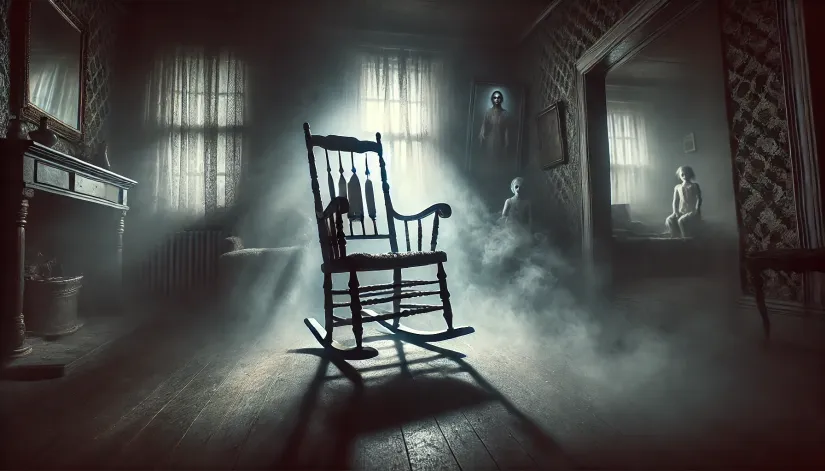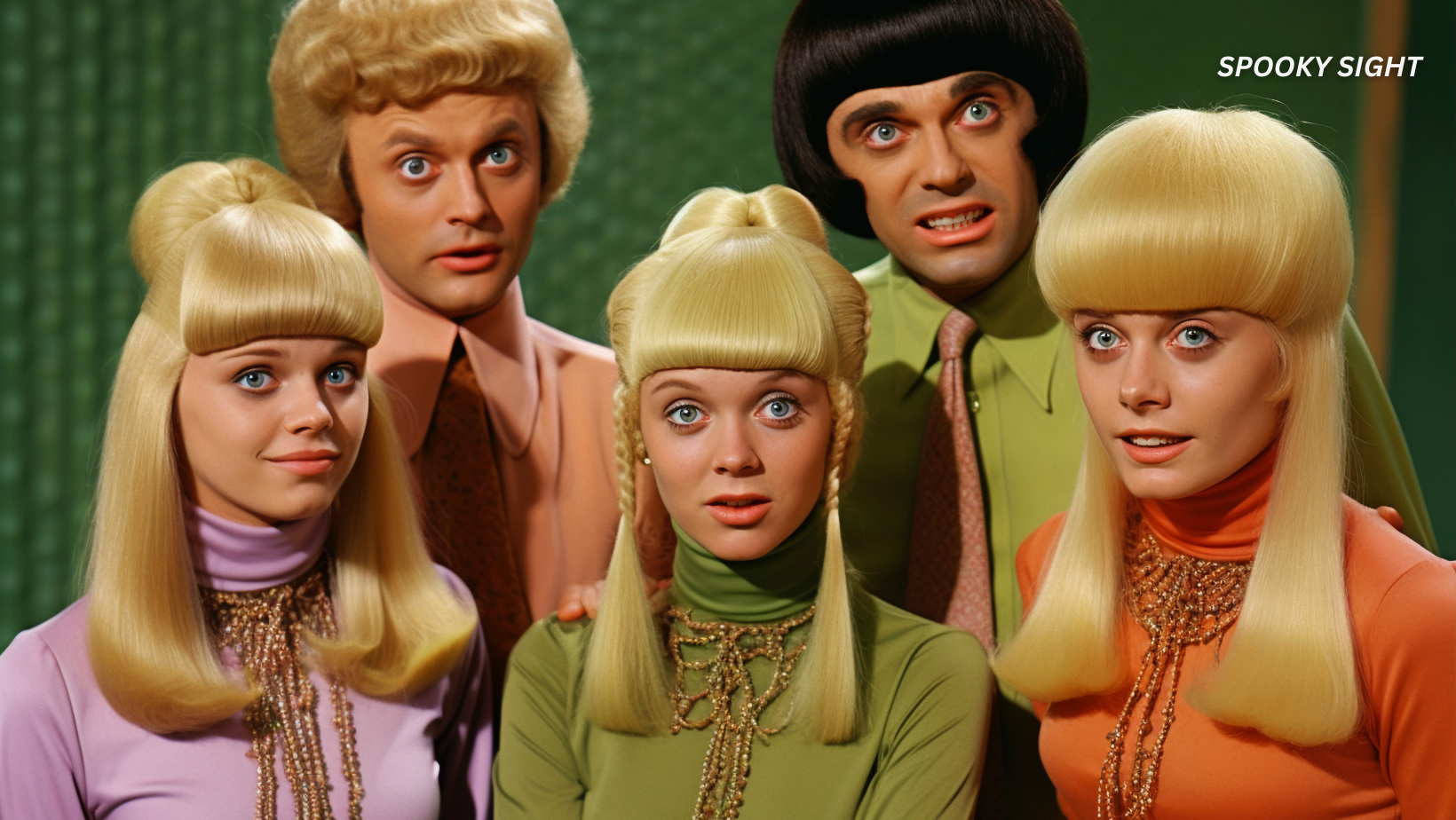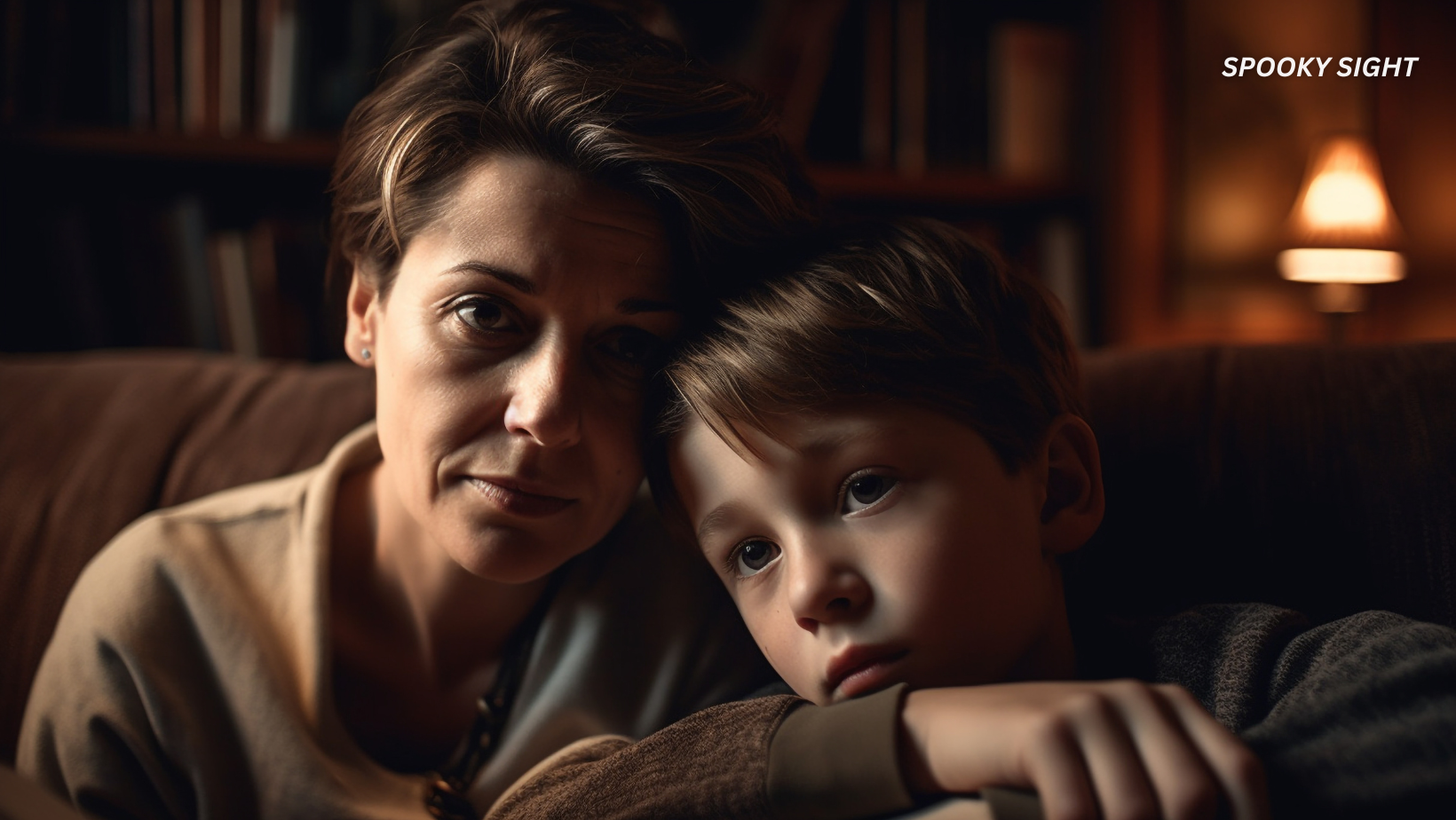Busby’s Stoop Chair isn’t just an ordinary piece of furniture—it’s a legend steeped in mystery, murder, and an alleged deadly curse that’s claimed over 60 lives.
Suspended high on the wall of Thirsk Museum in North Yorkshire, this infamous chair is said to bring death to anyone who dares sit in it.
But is this curse real, or is it just a tale spun from centuries-old folklore?
In this article:
Why this 18th Century Chair Is Feared by Many
We should start with a brief explanation of what’s going on with this allegedly cursed object.
Busby’s Stoop Chair, an ostensibly ordinary oak chair, has earned a reputation as one of history’s most infamous cursed objects. Its dark legacy dates back to 1702.
The chair’s sinister story begins with Thomas Busby, a notorious criminal who was sentenced to death for the brutal murder of his father-in-law, Daniel Awety.
As Busby was led to the gallows, he allegedly cursed his favorite chair, vowing that death would soon follow anyone who dared to sit in it.
Over the centuries, this presumably haunted chair has been linked to numerous unexplained fatalities.
From the bizarre accounts of World War II airmen who never returned from their missions to mysterious deaths in the 1970s, Busby’s Stoop Chair has become a symbol of death and misfortune.
Today, the chair hangs high on the Thirsk Museum’s wall in North Yorkshire, so no one can sit in it and test the curse.
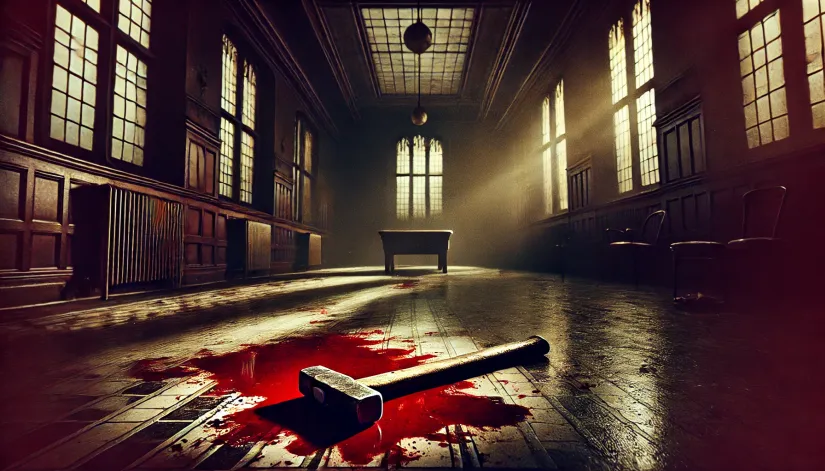
The Dark Origins of Busby’s Stoop Chair Curse
Who Was Thomas Busby and What Drove Him to Murder?
As mentioned, Thomas Busby wasn’t just any ordinary man in 1702 North Yorkshire—he was a thief, a boozer, and a man with a notorious temper that would ultimately seal his tragic fate.
According to local records, Busby lived in the small village of Kirby Wiske, where he ran a shady partnership with his father-in-law, Daniel Awety (also spelled Auty or Awety). The two were involved in coin counterfeiting, a dangerous and illegal trade during that era.
Awety, who had moved to the area from Leeds, had established his operation at Danotty Hall. The location was perfect for their illicit activities. It was a secluded, half-abandoned, old farm that provided the ideal cover.
Related: Stockwell Poltergeist: How One Servant Fooled Everyone
Awety had gone to great lengths to build a concealed room behind a sturdy oak door connected by a secret passage from the cellar to protect their operation. He probably didn’t want prying eyes to ever discover their illicit work.
The main building itself, perched on a rise, offered an ideal vantage point to spot any unwanted visitors approaching.
However, while partners in crime, the relationship between Busby and Awety was far from harmonious. Why? Because of two reasons.
First, Busby was a notorious drunkard with a quick temper, prone to making bad decisions and having a loose tongue. Which, obviously, wasn’t good for the “buisness.”
Busby also had issues with Awety’s authority in their criminal enterprise and his interference in his marriage to Elizabeth (Awety’s daughter). Awety disapproved of Busby’s marriage to her from the start.
According to the Kirby Wiske parish records, on a fateful day in 1702 (the exact date is not specified), after a heated argument with Awety—who had the audacity to sit in Busby’s favorite chair and threaten to take Elizabeth away—Busby’s rage reached a breaking point.
That night, likely intoxicated by alcohol, Busby crept to Danotty Hall and brutally murdered Awety with a hammer.
The crime was discovered soon after, and Busby was swiftly arrested, tried, and sentenced to death for murder.
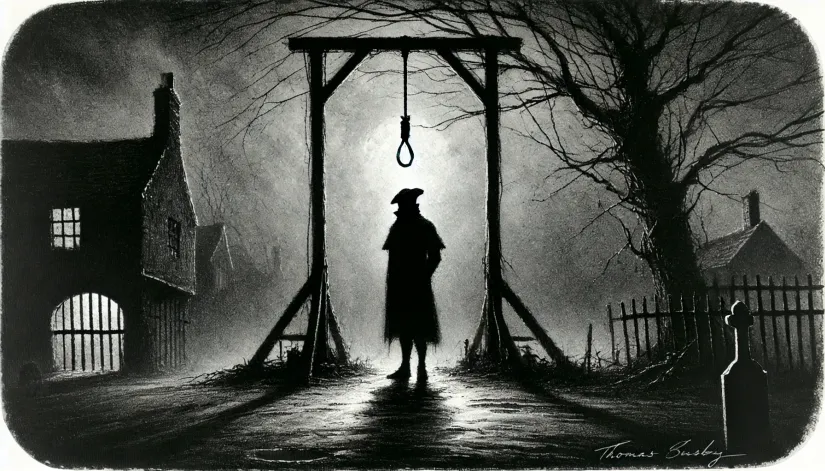
Busby’s Final Words
As Thomas Busby was led to his execution, he was granted a grim final request—a last drink at his beloved Danotty Hall Inn (later renamed Busby Stoop Inn following the widespread legend that grew after his execution).
There, Busby sat for one last time in the now-infamous chair, his rage festering with every passing moment.
The execution took place at the A61 crossroads near Sandhutton, a site chosen not just for its convenience but for its symbolic significance.
In the early 18th century, crossroads were often selected for executions as they were believed to be places where restless spirits could be trapped—preventing them from returning to haunt the living.
Our recommendations:
- The Anguished Man: Haunted Painting or Elaborate Hoax?
- The Smiling Man: A Terrifying Urban Legend from Seattle
- Flatwoods Monster Museum: A Must-See for Cryptids and UFO Fans
This practice was part of a broader and more brutal form of punishment known as gibbeting.
Gibbeting involved hanging the condemned in an iron cage after death, their bodies left to rot in public view. It was a macabre display that served as a warning to others and was considered the ultimate punishment, as it denied the criminal a proper burial and, by extension, peace in the afterlife.
Busby’s body was too subjected to this grim fate. After the execution, his corpse was suspended at the crossroads for weeks and left there to rot and be picked up by birds and rats.
However, when the moment of his execution arrived, Busby allegedly cursed his beloved chair. With his dying words, the killer vowed that anyone who dared sit in it would meet a sudden and violent death.
This curse, spoken in the shadow of the crossroads gallows, marked the birth of one of England’s strangest legends—a legend fueled either by Busby’s unrelenting anger or perhaps the power of suggestion.
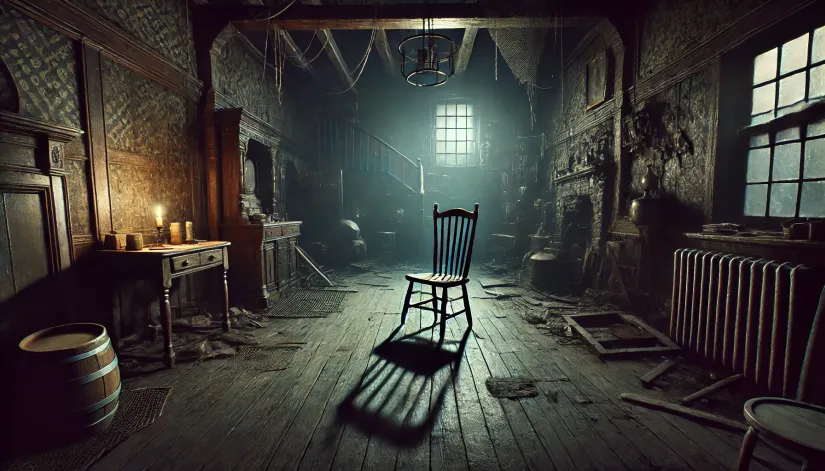
Unexplained Deaths Linked to Busby’s Chair
According to the Busby’s Stoop Chair legend, the cursed object may have caused the deaths of over 60 people who dared to sit in it.
These alleged fatalities span several centuries, beginning with the first recorded death in 1894, then all throughout World War II, and until the 1970s. The multiple tragic accidents—including fatal falls, crashes, and sudden illnesses—were all linked to the Busby’s Stoop Chair.
The First Victim of the Curse
The first presumed death linked to Busby’s Stoop Chair curse dates back to 1894 and involves a local chimney sweep who met a mysterious and gruesome end.
After an evening of drinking at the inn, the chimney sweep and his friend decided to test their courage by sitting in the infamous chair.
Later that night, the man was found dead, hanging from a gatepost near the very spot where Busby was executed. His death was officially ruled a suicide, but the locals whispered of the chair’s curse.
The story took an even darker turn years later when, on his deathbed, the chimney sweep’s drinking companion confessed that he had, in fact, murdered his friend and staged the hanging to look like a suicide.
The RAF Pilots Who Never Returned
Busby’s Stoop Chair’s ominous reputation only strengthened during World War II, when the inn became a popular haunt for Canadian airmen stationed at Skipton-on-Swale.
These young RAF pilots often gathered at the inn for drinks, swapping stories and dares. Inevitably, the conversation would turn to the cursed chair, and some brave souls would take a seat, dismissing the warnings as mere superstition.
Tragically, many of those who dared to sit in the chair never returned from their bombing missions over mainland Europe.
Their deaths, combined with the already high mortality rate of the war, fueled the belief that the chair was cursed—its influence reaching even across the skies.
Another Decade of Deadly Encounters
By the time the 1970s rolled around, the legend of Busby’s Stoop Chair had become firmly entrenched in local lore.
Yet, the chair was not content to rest on its dark laurels. A series of tragic events in this decade would only reinforce the fear that the chair’s curse was very much alive.
One of the most unusual incidents involved a roofer who, after a few drinks at the inn, was dared by his colleagues to sit in the cursed chair.
The next day, the handyman fell to his death from… a roof.
Another case involved a cleaning lady who accidentally bumped into the chair while tidying up. She was later diagnosed with a terminal brain tumor and died shortly after.
In another tragic episode, a delivery man who sat on Busby’s Stoop Chair during a routine stop at the inn was killed in a fatal crash on the very same day on his way home.
Similarly, a local man who, after hearing tales of the curse, decided to sit in the chair despite the warnings. Shortly after this bold act, the man suffered a massive heart attack and died.
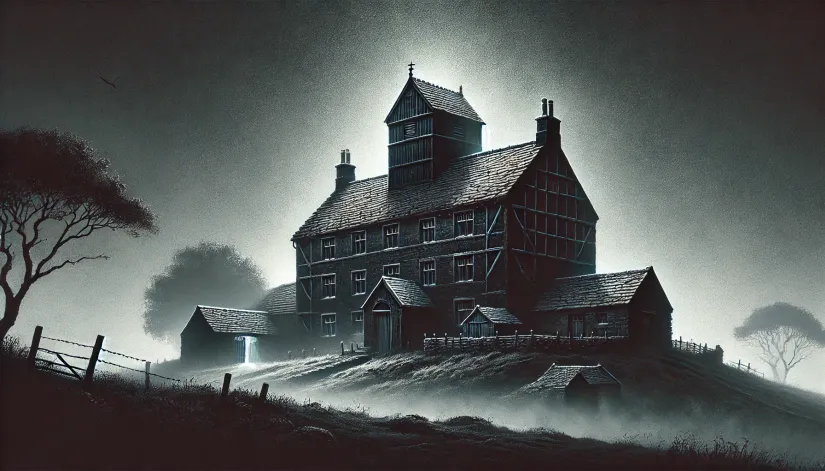
Paranormal Sightings Linked to the Cursed Chair
The infamous Busby Stoop Inn was also the site of numerous ghostly apparitions that have solidified its reputation as one of the most haunted pubs in Thirsk.
Over the years, both locals and visitors have reported spine-chilling encounters with what many believe to be Thomas Busby’s restless spirit, still lingering at the place where he spent his final moments.
One of the most well-known reports comes from Karen Rowley, a former landlady of the Busby Stoop Inn. During her time managing the pub, Rowley presumably experienced several weird occurrences that she couldn’t explain.
For example, she claimed to have seen a tall, dim figure without arms and with an indistinct face moving silently across the upstairs landing before disappearing through a wall.
Rowley described the experience as utterly terrifying and was not alone in her encounters.
Visitors to the inn have also reported hearing mysterious footsteps, feeling sudden cold spots, and seeing objects move on their own. Some have claimed to hear voices late at night, particularly in the areas of the pub where Busby is said to have spent most of his time.
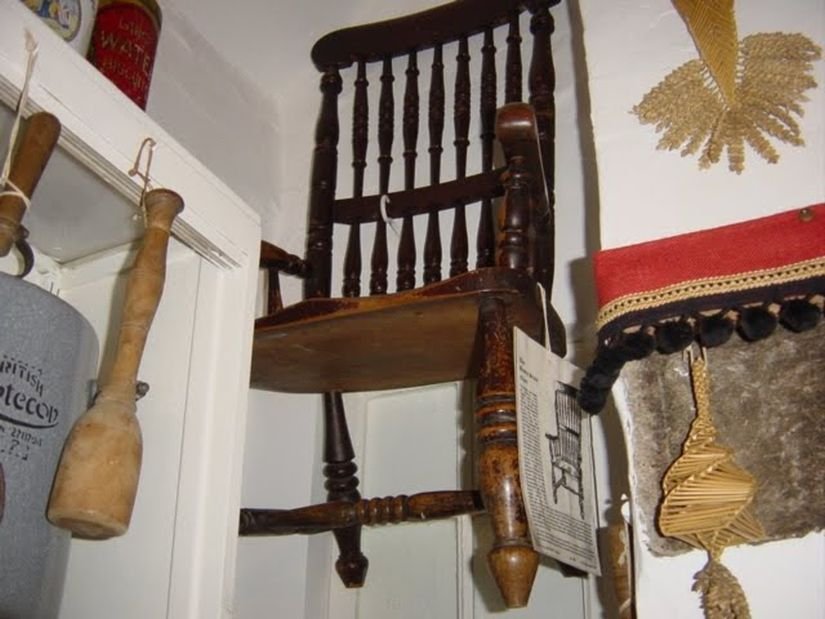
Where Is Busby’s Stoop Chair Today?
After claiming numerous lives and instilling fear in the hearts of locals and visitors alike, the infamous chair was finally removed from its original home at the Busby Stoop Inn in 1978.
The decision to relocate Busby’s Stoop Chair was probably urged by a growing concern for public safety. Especially since the string of mysterious deaths linked to it had become impossible to overlook.
Tony Earnshaw—the landlord of Busby Stoop Inn at the time who initially dismissed the curse as mere superstition—could no longer bear the thought of keeping such a dangerous object on the premises and became convinced that the chair was indeed cursed and too risky to remain accessible.
So, he contacted the Thirsk Museum and offered to donate the object—on one strict condition: that it be displayed so that no one could ever sit in it again.
The museum agreed to these terms, and the chair was carefully transported from the inn to the museum, where it was installed as a prominent exhibit.
To guarantee that the alleged curse could not claim any more lives, the museum suspended the chair from the ceiling—about five feet above the ground—in a secure and highly visible display.
And, despite numerous requests from visitors (and even threats of legal action), the museum has consistently refused to allow anyone to sit in the chair, adhering to museum policy and Earnshaw’s original stipulation.
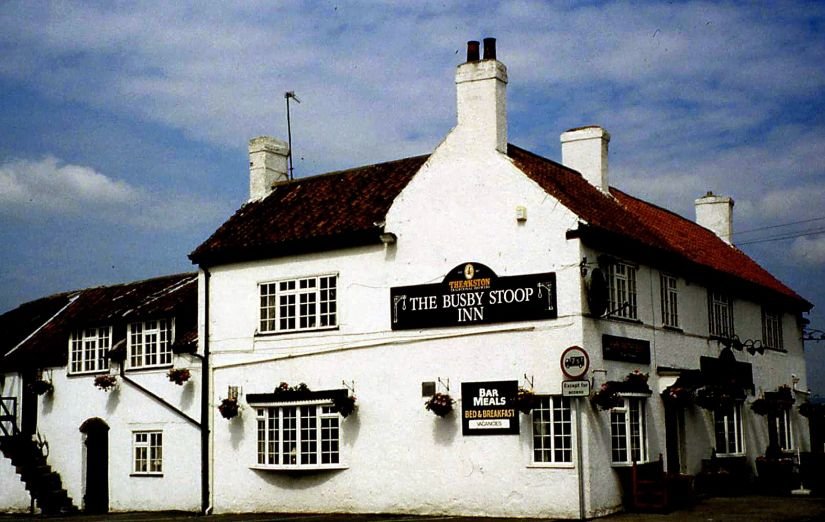
Is the Busby’s Chair Curse Real?
It’s time to focus a bit on actual facts. This is what the SpookySight investigation has discovered about the allegedly cursed Busby’s Stoop Chair:
Skeptics have raised several valid doubts about the legitimacy of Busby’s Stoop Chair curse, mainly focusing on the origins and authenticity of the chair itself.
For instance, Dr. Adam Bowett—a respected furniture historian with a Research Fellowship at the Victoria and Albert Museum—investigated the chair. He concluded that it was likely made around 1840—138 years after Thomas Busby’s execution.
According to Bowett, the chair is a “Caistor” chair, associated with the chairmaker John Shadford in North Lincolnshire. Translation? It’s improbable that the object displayed at the Thirsk Museum has any direct connection to Busby or the original events of 1702.
Furthermore, despite the numerous deaths attributed to the Busby’s Stoop Chair, historical records don’t document any such incidents until the mid-20th century.
Which, of course, is also strange. And it made some believe that the curse may be more of a modern-day fabrication or a product of local lore rather than a historical fact.
Not to mention that many of the reported deaths could be easily attributed to coincidence or the dangerous activities that the victims were involved in.
For instance, for the Royal Air Force (RAF) Bomber Command, the death rate was notably high. It is estimated that over 55,000 out of approximately 125,000 aircrew members who served in the RAF Bomber Command lost their lives during the war. This represents a death rate of around 44%.
So yeah. Busby Stoop Inn was one of the favorite establishments where RAF pilots spent their free time drinking and blowing off steam.
Hundreds of RAF pilots probably sat on the allegedly cursed chair (maybe some even without realizing it). But the tragic fates of some of these pilots are far more plausibly linked to the inherent dangers of war rather than any supernatural curse.

